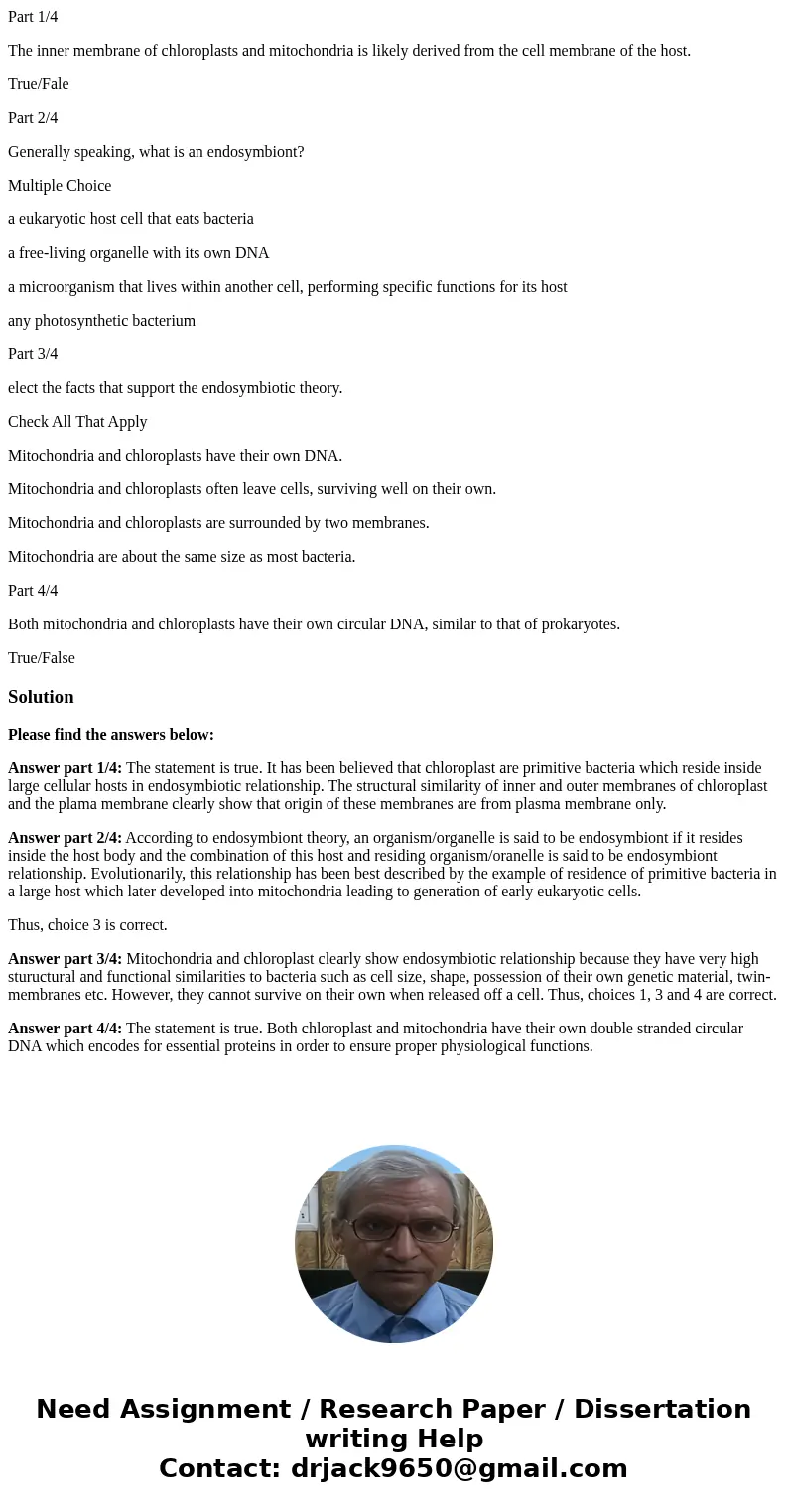Part 14 The inner membrane of chloroplasts and mitochondria
Part 1/4
The inner membrane of chloroplasts and mitochondria is likely derived from the cell membrane of the host.
True/Fale
Part 2/4
Generally speaking, what is an endosymbiont?
Multiple Choice
a eukaryotic host cell that eats bacteria
a free-living organelle with its own DNA
a microorganism that lives within another cell, performing specific functions for its host
any photosynthetic bacterium
Part 3/4
elect the facts that support the endosymbiotic theory.
Check All That Apply
Mitochondria and chloroplasts have their own DNA.
Mitochondria and chloroplasts often leave cells, surviving well on their own.
Mitochondria and chloroplasts are surrounded by two membranes.
Mitochondria are about the same size as most bacteria.
Part 4/4
Both mitochondria and chloroplasts have their own circular DNA, similar to that of prokaryotes.
True/False
Solution
Please find the answers below:
Answer part 1/4: The statement is true. It has been believed that chloroplast are primitive bacteria which reside inside large cellular hosts in endosymbiotic relationship. The structural similarity of inner and outer membranes of chloroplast and the plama membrane clearly show that origin of these membranes are from plasma membrane only.
Answer part 2/4: According to endosymbiont theory, an organism/organelle is said to be endosymbiont if it resides inside the host body and the combination of this host and residing organism/oranelle is said to be endosymbiont relationship. Evolutionarily, this relationship has been best described by the example of residence of primitive bacteria in a large host which later developed into mitochondria leading to generation of early eukaryotic cells.
Thus, choice 3 is correct.
Answer part 3/4: Mitochondria and chloroplast clearly show endosymbiotic relationship because they have very high stuructural and functional similarities to bacteria such as cell size, shape, possession of their own genetic material, twin-membranes etc. However, they cannot survive on their own when released off a cell. Thus, choices 1, 3 and 4 are correct.
Answer part 4/4: The statement is true. Both chloroplast and mitochondria have their own double stranded circular DNA which encodes for essential proteins in order to ensure proper physiological functions.

 Homework Sourse
Homework Sourse